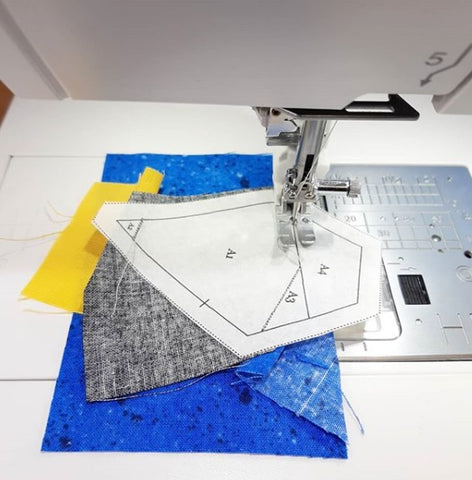With paper piecing in the name of both it’s easy to get foundation paper piecing (FPP) and English paper piecing (EPP) confused, especially if you are new to quilting. They are in fact two very different techniques, one involving hand stitching and one involving machine piecing.
What is foundation paper piecing?
Foundation piecing is a method of quilting that allows you to use small scraps to sew detailed designs, or designs which require precision piecing by sewing through lines on paper which you then tear off afterwards. You can use free foundation patterns, purchased patterns or downloads from books and magazines which you either print directly onto the paper, trace onto the paper or draw on freehand. You sew along the lines to ensure precision, this allows you to create designs that would be very tricky using traditional piecing methods such as the Millennium Falcon cushion I made shown above (free pattern here).

We have written a beginner’s guide to foundation paper piecing plus we sell paper especially designed for foundation piecing too.

What is English Paper Piecing?
English paper piecing is a hand sewing technique which involves stitching fabric shapes around a paper or card template and then hand sewing the shapes together (removing the paper or card once you have finished piecing). Unlike with foundation paper piecing you can normally reuse the papers you remove from your English Paper piecing. This technique allows for more accurate stitching of difficult shapes like hexagons and makes it easier to join difficult angles. Above is an English Paper pieced lion I made using a pattern by Violet Craft.

There is a tutorial for learning English paper piecing here.
Both techniques are used to make quilts or patchwork and quilting projects like cushions, pouches and bags. They are also both scrap friendly quilting techniques but foundation piecing is done by machine, and you cannot reuse the paper, English paper piecing is done by hand and you can reuse your templates.
